This Ngorongoro Crater is the world's biggest unfilled, intact, and inactive volcano, located in Tanzania near Serengeti National Park. It is home to over 30,000 animals, and this is the most visited African attraction in the world. Here are 10 interesting facts about Ngorongoro Crater to help inspire your own future visit to the best Tanzanian conservation area in 2024 and 2025:
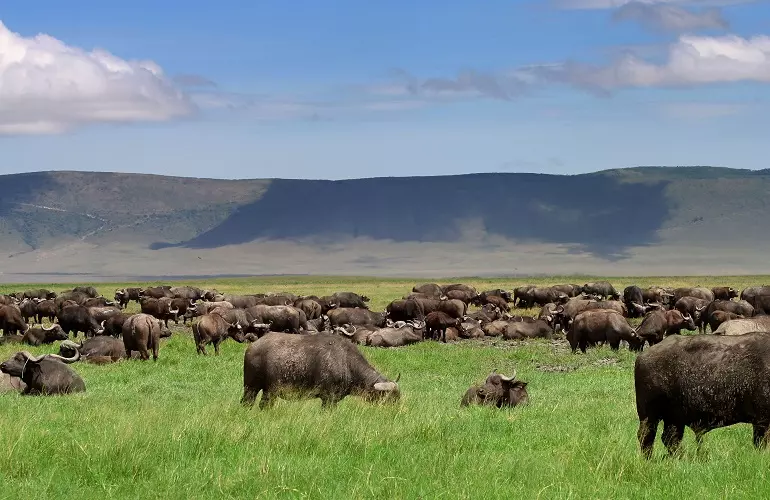
World's largest inactive volcano.
Do you need a satisfied Ngorongoro Crater holiday trip?
Get a free, best price-guaranteed Ngorongoro Crater holiday trip quote and a quick response from us in 2024 and 2025. Call +255 747 989 416 on WhatsApp or email us at exploreafrica024@gmail.com to get a free quote. We are available 24/7 and we are happy to help you.
1. Ngorongoro crater's original
The crater was formed about 2.5 million years ago by a large active volcano whose cone collapsed inward after a major eruption, leaving behind the crater that we see today. In the 1920s, the area was declared a game reserve by the British colonial government and later a conservation area. Finally, the area was established in 1959 as a multi-use area.
2. Location and size
Ngorongoro Crater is located in northern Tanzania, near the Serengeti National Park, and is the world's largest inactive, intact, and unfilled volcanic caldera. It measures about 19 kilometers in diameter and covers an area of approximately 264 km2.
3. UNESCO World Heritage Site
In 1979, Ngorongoro Crater was declared a UNESCO World Heritage Site due to its unique ecosystem and geological significance.
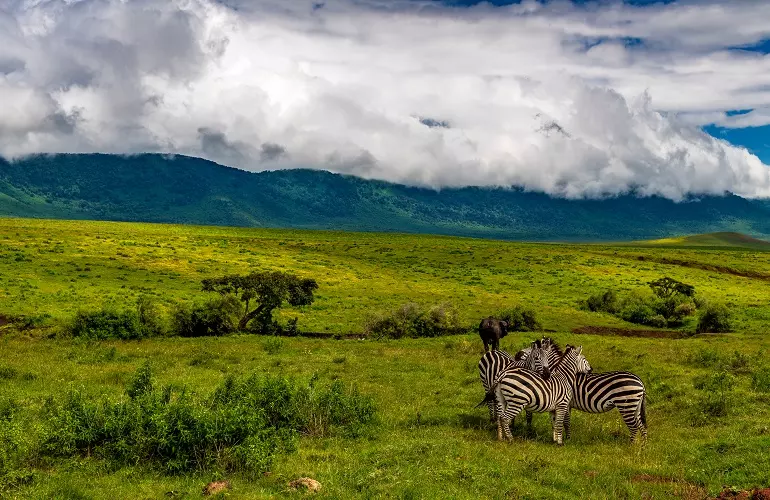
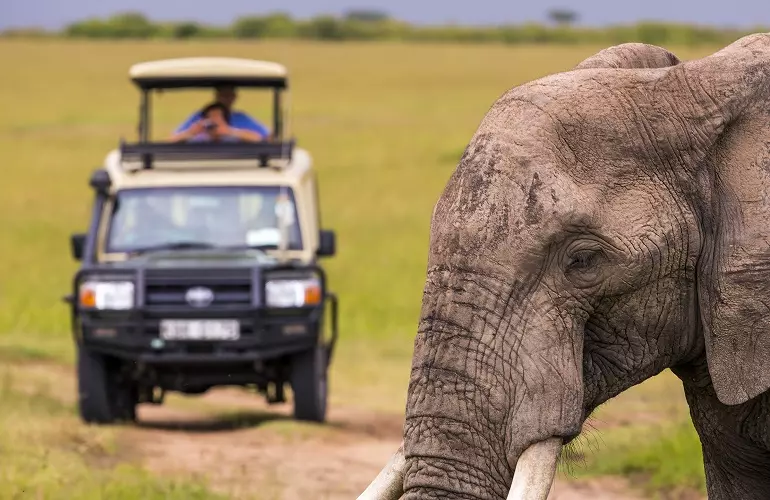
4. Wildlife Diversity
The crater is home to an incredible diversity of wildlife, including the "African big five" (elephants, rhinoceroses, lions, leopards, and Cape buffalos), as well as zebras, gazelles, hippos, wildebeest, crocodiles, and many other species.
5. Natural wonders in the world
Ngorongoro Crater is considered one of the most beautiful natural wonders in the world, with its rich biodiversity, stunning landscapes, and cultural significance. It is a must-visit destination for anyone traveling to Tanzania.
6. Conservation Area
The Ngorongoro Conservation Area was established in 1959, and the crater is managed by the Ngorongoro Conservation Area Authority. The crater has strict rules and regulations to protect the wildlife and ecosystem, and visitors are required to follow these rules.
Do you need a satisfied Ngorongoro Crater adventure trip?
Get a free, best price-guaranteed Ngorongoro Crater adventure trip quote and a quick response from us in 2024 and 2025. Call +255 747 989 416 on WhatsApp or email us at exploreafrica024@gmail.com to get a free quote. We are available 24/7 and we are happy to help you.
7. Safari tours
Visitors to Ngorongoro Crater can take safari tours to explore the crater and view the wildlife. Safari tours are available from nearby towns like Arusha and Moshi. Here is the best list of Ngorongoro safari holiday for you in 2024 and 2025.
8. Bird watching
The crater is also a popular destination for birdwatchers, with over 500 bird species recorded in the area. Some of the most common species include flamingos, ostriches, eagles, and vultures.
9. Ngorongoro's accommodations
Ngorongoro Conservation Area offers a variety of accommodation options, from luxury lodges to tented camps, mid-range lodges, and budget-friendly campsites. Visitors can choose to stay inside the crater or in nearby towns.
10. Film and documentary locations
The Oscar-winning movie was filmed partly in the Ngorongoro Conservation Area. One of the scenes where you can spot the crater is when Denys takes off from the Olkurruk airstrip and flies over the Ngorongoro and Masai Mara.
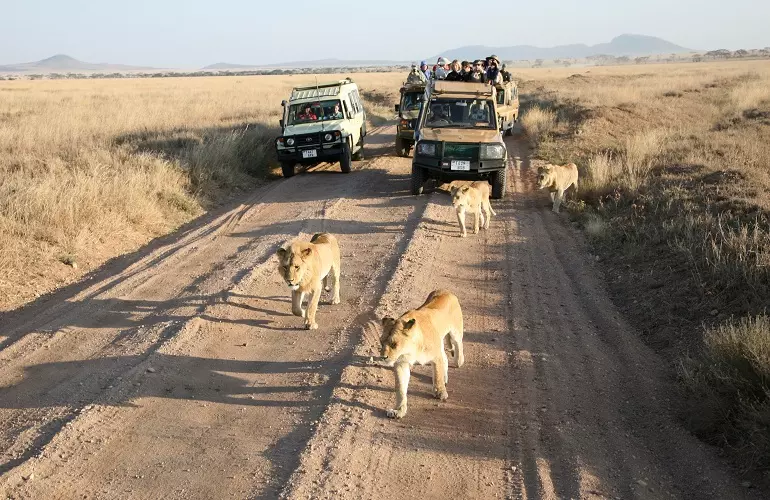
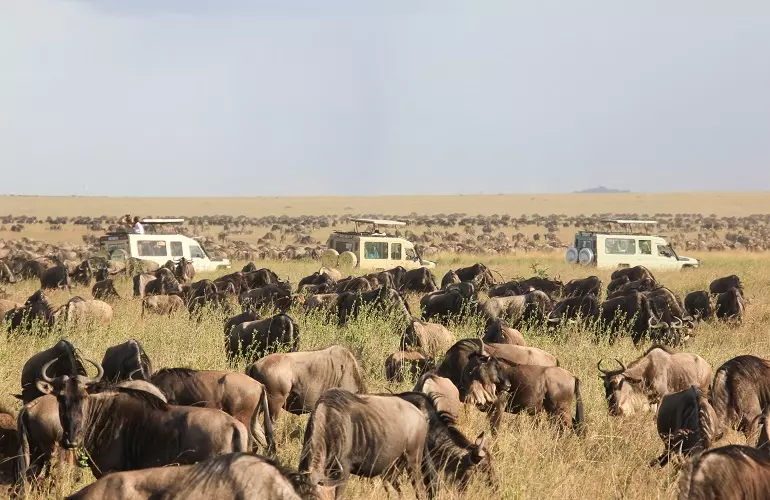
Ngorongoro Crater history
The Ngorongoro Crater is believed to have formed about 2.5 million years ago from a large active volcano whose cone collapsed inward after a major eruption, leaving behind the crater that we see today. In the 1920s, the area was declared a game reserve by the British colonial government, and later a conservation area. Today, the Ngorongoro Conservation Area, which includes the crater, is managed by the Tanzanian government and is recognized as a UNESCO World Heritage Site in 1979.
What is Ngorongoro Crater famous for?
The Ngorongoro Crater is famous for being one of the largest unbroken calderas in the world and is a UNESCO World Heritage Site. The crater is approximately 2,000 feet (600 meters) deep and 12 miles (19 kilometers) wide and is home to a wide variety of wildlife, including elephants, lions, cheetahs, leopards, and hippos. Before the crater erupted, it would have been higher than Kilimanjaro, the highest peak in Africa, at 5895 meters.
Why is Ngorongoro Crater important?
The Ngorongoro Crater is important because the property has global importance for biodiversity conservation due to the presence of globally threatened species. The density of wildlife inhabiting the area—zebra, gazelles, and other animals—in the northern plains is most important in the crater.
What are the big 5 in Ngorongoro Crater?
The big 5 in Ngorongoro Crater, Tanzania, include elephants, leopards, buffaloes, lions, and rhinos. They are most popular among travelers who visit Tanzania on Ngorongoro Crater safaris all throughout the year. These animals were originally named by big game hunters for being the most dangerous and difficult animals to hunt on foot. Today, the term is used in safari tourism to refer to the most sought-after travelers who visit Africa on safaris.
What is unique about Ngorongoro Crater?
The Ngorongoro Crater is the largest unfilled, intact, and inactive volcano in the whole world, which makes it unique. The crater is among Africa's seven natural wonders and was formed as a result of volcanic activity over 2.5 million years ago.
The top 10 interesting facts about Ngorongoro Crater